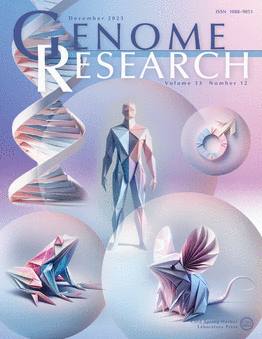ERC2.0 evolutionary rate covariation update improves inference of functional interactions across large phylogenies
IF 5.5
2区 生物学
Q1 BIOCHEMISTRY & MOLECULAR BIOLOGY
引用次数: 0
Abstract
Evolutionary rate covariation (ERC) is an established comparative genomics method that identifies sets of genes sharing patterns of sequence evolution, which suggests shared function. Whereas many functional predictions of ERC have been empirically validated, its predictive power has hitherto been limited by its inability to tackle the large numbers of species in contemporary comparative genomics data sets. This study introduces ERC2.0, an enhanced methodology for studying ERC across phylogenies with hundreds of species and tens of thousands of genes. ERC2.0 improves upon previous iterations of ERC in algorithm speed, normalizing for heteroskedasticity, and normalizing correlations via Fisher transformations. These improvements have resulted in greater statistical power to predict biological function. In exemplar yeast and mammalian data sets, we demonstrate that the predictive power of ERC2.0 is improved relative to the previous method, ERC1.0, and that further improvements are obtained by using larger yeast and mammalian phylogenies. We attribute the improvements to both the larger data sets and improved rate normalization. We demonstrate that ERC2.0 has high predictive accuracy for known annotations and can predict the functions of genes in nonmodel systems. Our findings underscore the potential for ERC2.0 to be used as a single-pass computational tool in candidate gene screening and functional predictions.ERC2.0进化速率协变更新改进了跨大系统发生的功能相互作用推断
进化率共变异(ERC)是一种成熟的比较基因组学方法,用于识别序列进化的基因共享模式,这表明共享功能。尽管ERC的许多功能预测已经得到了经验验证,但由于无法处理当代比较基因组学数据集中的大量物种,其预测能力迄今受到限制。本研究引入了ERC2.0,这是一种增强的方法,用于研究数百个物种和数万个基因的ERC跨系统发育。ERC2.0在算法速度、异方差归一化和通过Fisher变换归一化相关性方面改进了之前的ERC迭代。这些改进提高了预测生物功能的统计能力。在样本酵母和哺乳动物数据集中,我们证明了ERC2.0的预测能力相对于之前的方法ERC1.0有所提高,并且通过使用更大的酵母和哺乳动物系统发育得到了进一步的提高。我们将改进归功于更大的数据集和改进的率归一化。我们证明了ERC2.0对已知注释具有较高的预测精度,并且可以预测非模型系统中基因的功能。我们的发现强调了ERC2.0作为候选基因筛选和功能预测的单次计算工具的潜力。
本文章由计算机程序翻译,如有差异,请以英文原文为准。
求助全文
约1分钟内获得全文
求助全文
来源期刊

Genome research
生物-生化与分子生物学
CiteScore
12.40
自引率
1.40%
发文量
140
审稿时长
6 months
期刊介绍:
Launched in 1995, Genome Research is an international, continuously published, peer-reviewed journal that focuses on research that provides novel insights into the genome biology of all organisms, including advances in genomic medicine.
Among the topics considered by the journal are genome structure and function, comparative genomics, molecular evolution, genome-scale quantitative and population genetics, proteomics, epigenomics, and systems biology. The journal also features exciting gene discoveries and reports of cutting-edge computational biology and high-throughput methodologies.
New data in these areas are published as research papers, or methods and resource reports that provide novel information on technologies or tools that will be of interest to a broad readership. Complete data sets are presented electronically on the journal''s web site where appropriate. The journal also provides Reviews, Perspectives, and Insight/Outlook articles, which present commentary on the latest advances published both here and elsewhere, placing such progress in its broader biological context.
 求助内容:
求助内容: 应助结果提醒方式:
应助结果提醒方式:


